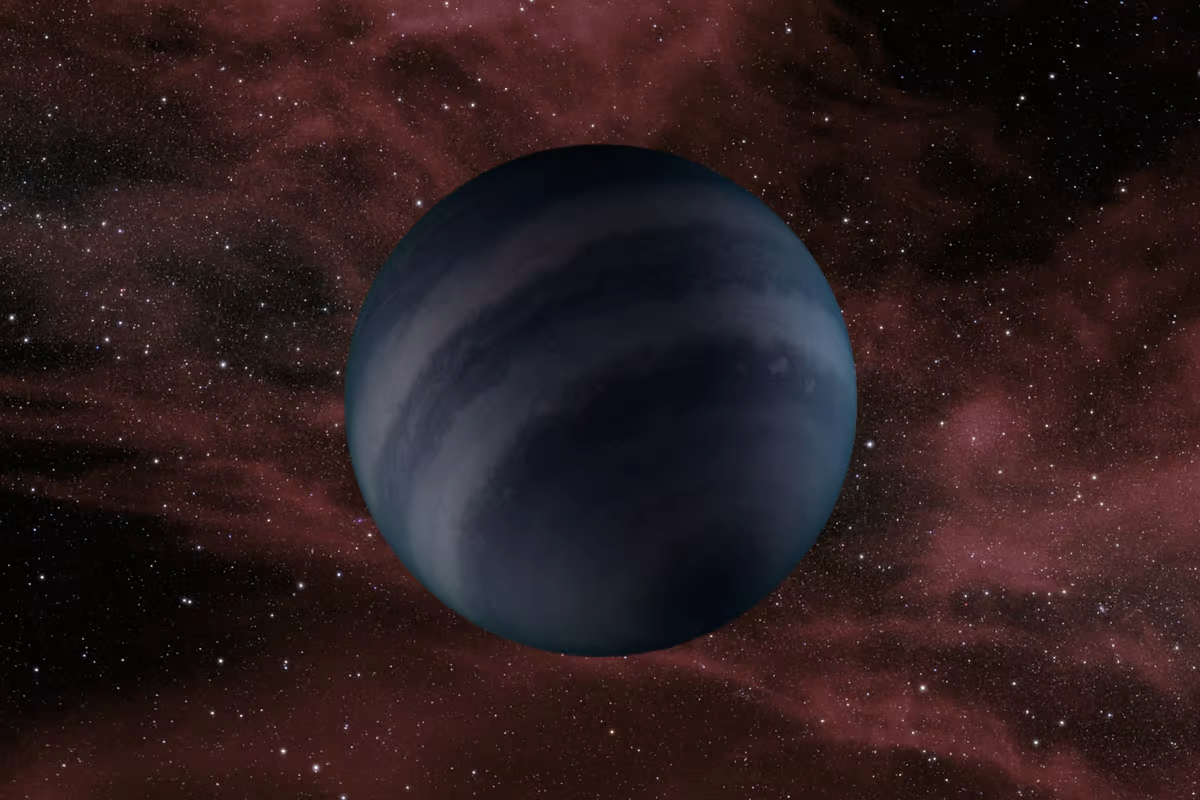
Black dwarfs are fascinating celestial objects that have captured the curiosity of astronomers and astrophysics enthusiasts alike. These enigmatic remnants of once-bright stars provide us with valuable insights into the life cycle of stars and the vastness of the universe. In this article, we will delve into the captivating world of black dwarfs, exploring their origins, characteristics, and the mind-boggling phenomena associated with them. From their formation to their eventual fate, black dwarfs hold secrets waiting to be unraveled. So, prepare to embark on a journey through the cosmos as we uncover 18 intriguing facts about these mysterious and mesmerizing cosmic entities.
Key Takeaways:
- Black Dwarfs are like celestial time capsules, revealing secrets about the universe’s history and the fate of stars. They’re super dense, super cold, and could potentially solve the mystery of dark matter.
- While Black Dwarfs are still a cosmic mystery, their discovery could change everything we know about stars and the universe. They might hold the key to endless energy and unlock the secrets of stellar evolution.
The Black Dwarf is a theoretical celestial object.
The Black Dwarf is a hypothetical stellar remnant that is formed from a white dwarf star that has cooled down completely. It is believed that these objects will emit no light or heat and will exist in a state of perpetual darkness.
The formation process of Black Dwarfs is extremely long.
It is estimated that it would take billions of years for a white dwarf star to cool down and become a Black Dwarf. This is due to the slow release of residual heat from the star’s core.
Black Dwarfs are incredibly dense.
Despite their lack of heat and light, Black Dwarfs are incredibly compact and dense. Their mass is similar to that of the original white dwarf star, but they occupy a much smaller volume.
The temperature of Black Dwarfs is close to absolute zero.
As the white dwarf star cools down over billions of years, its temperature gradually approaches absolute zero, which is approximately -273.15 degrees Celsius (-459.67 degrees Fahrenheit).
Black Dwarfs emit no electromagnetic radiation.
Since Black Dwarfs have cooled down completely and lack any internal nuclear reactions, they do not emit any form of electromagnetic radiation, including visible light, infrared, or radio waves.
Black Dwarfs can be considered as “stellar fossils”.
Just as fossils provide valuable information about Earth’s history, Black Dwarfs can reveal important insights into the evolution and lifespan of stars in the universe.
The universe is not old enough for Black Dwarfs to exist yet.
Given the immense timescales required for a white dwarf star to cool down and become a Black Dwarf, it is estimated that the universe is currently not old enough for any Black Dwarfs to have formed.
Black Dwarfs could potentially outlast all other stars in the universe.
Once formed, Black Dwarfs are expected to have incredibly long lifespans, surpassing other types of stars that eventually exhaust their fuel and go through various stages of stellar evolution.
Black Dwarfs might contribute to the “missing mass” problem.
Scientists have speculated that Black Dwarfs, although undetectable by conventional means, could potentially account for a portion of the elusive dark matter or contribute to the “missing mass” problem in the universe.
The study of Black Dwarfs is purely theoretical at this point.
Since no Black Dwarfs have been observed or detected yet, our current understanding of these objects is based solely on theoretical models and calculations.
Black Dwarfs could potentially be used for future energy sources.
Some scientists have proposed that if it were possible to harness the residual energy from Black Dwarfs, these objects could serve as a long-lasting and sustainable energy source in the distant future.
The concept of Black Dwarfs was first proposed by Arthur Eddington in the early 20th century.
Arthur Eddington, a renowned astronomer, first theorized the existence of Black Dwarfs in his attempts to understand the fate of white dwarf stars over extended periods of time.
Black Dwarfs could help in understanding the ultimate fate of the universe.
The study of Black Dwarfs and their evolution could potentially provide valuable insights into the ultimate fate of the universe, including the concept of heat death, where all energy dissipates and stars cease to exist.
The color “black” in Black Dwarf refers to the absence of light.
The term “black” in Black Dwarf does not refer to the actual color of the object but rather to the absence of any light or electromagnetic radiation being emitted.
Black Dwarfs are not to be confused with Black Holes.
While both Black Dwarfs and Black Holes are astrophysical objects in a state of darkness, they differ significantly in terms of their formation, properties, and behavior.
The study of Black Dwarfs can shed light on the early universe.
By studying the formation and characteristics of Black Dwarfs, scientists can gain insights into the early stages of the universe and the processes that led to the formation of stars and galaxies.
Black Dwarfs would have a gravitational pull, despite their lack of mass.
Although Black Dwarfs are incredibly dense, their lack of nuclear reactions means that they do not generate significant gravitational forces compared to other objects like neutron stars or black holes.
The discovery of a Black Dwarf would revolutionize our understanding of stellar evolution.
If a Black Dwarf were to be observed or detected in the future, it would provide valuable data and insights that could lead to significant advancements in our understanding of stellar evolution and the physics of dying stars.
Conclusion
In conclusion, black dwarfs are truly fascinating celestial objects that hold several captivating secrets. As the end stage of a star’s life cycle, black dwarfs are incredibly dense, incredibly cold, and emit no heat or light. Despite their enigmatic nature, scientists continue to study and explore these intriguing objects to further our understanding of the universe.From their formation to their potential role in the future of the cosmos, black dwarfs provide valuable insights into the evolution of stars and the ultimate fate of our universe. As our knowledge of these cosmic remnants expands, we can expect to uncover even more amazing facts about black dwarfs and the astronomical wonders they hold.So keep your eyes on the cosmos, as there is still much to discover about these mesmerizing black dwarfs and the mysteries they hold within their dark depths.
FAQs
1. What is a black dwarf?
A black dwarf is a theoretical celestial object that is formed from a white dwarf star that has cooled down and stopped emitting heat and light.
2. How are black dwarfs formed?
Black dwarfs are formed when a white dwarf star reaches the end of its life cycle and runs out of nuclear fuel. Over billions of years, it cools down until it no longer emits any detectable radiation.
3. Can black dwarfs be observed?
Currently, black dwarfs cannot be directly observed because they do not emit any heat or light. However, scientists continue to search for indirect ways to detect and study these celestial objects.
4. What is the significance of black dwarfs?
Black dwarfs are significant because they represent the final stage of stellar evolution. By studying black dwarfs, scientists can gain insights into the lifespan of stars and the ultimate fate of the universe.
5. Are there any known black dwarfs in the universe?
As of now, no black dwarfs have been directly confirmed or observed. The age of the universe is not old enough yet for any white dwarf stars to have cooled sufficiently to become black dwarfs.
6. Can black dwarfs ever undergo further evolution?
No, black dwarfs are considered the end stage of stellar evolution. Without any nuclear fuel left, they will remain in their cooled and dormant state indefinitely.
7. How long will it take for white dwarfs to become black dwarfs?
The cooling process of a white dwarf star to become a black dwarf is estimated to take trillions of years. However, the universe is not yet old enough for any white dwarfs to have reached this stage.
Black dwarfs may be the final stage of a star's life, but there's still much to learn about these fascinating celestial objects. Dive deeper into the mysteries of the universe by exploring unbelievable facts about stellar evolution, the process that gives rise to these enigmatic entities. While black dwarfs are purely theoretical, their close cousins, white dwarfs, offer surprising insights into the life and death of stars. For a change of pace, check out our collection of intriguing facts about the sci-fi cult classic movie Dark Star, which offers a whimsical take on space exploration and the unknown.
Was this page helpful?
Our commitment to delivering trustworthy and engaging content is at the heart of what we do. Each fact on our site is contributed by real users like you, bringing a wealth of diverse insights and information. To ensure the highest standards of accuracy and reliability, our dedicated editors meticulously review each submission. This process guarantees that the facts we share are not only fascinating but also credible. Trust in our commitment to quality and authenticity as you explore and learn with us.


